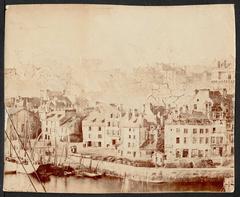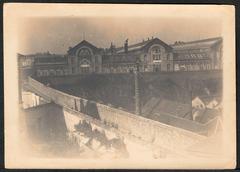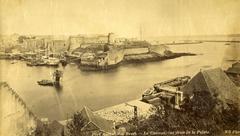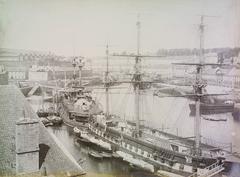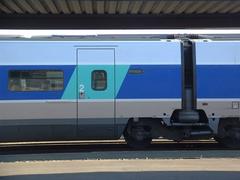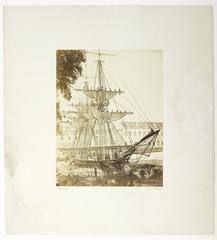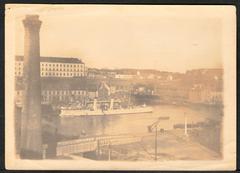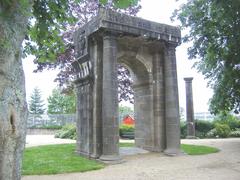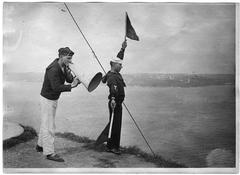
Fontaine de Recouvrance: Visiting Hours, Tickets, and Brest Historical Sites Guide
Date: 14/06/2025
Introduction
The Fontaine de Recouvrance, nestled in Brest’s historic Recouvrance district, is both a testament to the city’s enduring maritime heritage and a dynamic center for contemporary culture. Dating back to the 18th century, this distinctive fountain and its adjoining Maison de la Fontaine survived the widespread destruction of World War II, allowing visitors to experience a rare fragment of Brest’s pre-war urban landscape. Today, the site not only preserves stunning neoclassical architecture but also hosts vibrant cultural programming, making it a must-see for history lovers, architectural enthusiasts, and cultural explorers alike.
This guide delivers detailed information on the history, architectural features, cultural significance, visiting hours, ticketing, accessibility, and practical tips for Fontaine de Recouvrance and Maison de la Fontaine, ensuring a rich and rewarding visit to one of Brest’s most treasured historical landmarks.
For further insights and current cultural schedules, consult the official tourism and cultural portals: (Maison de la Fontaine Brest, Brest Official Site, Petit Futé).
Table of Contents
- Historical Background
- Architectural Features and Heritage Value
- Cultural Significance
- Visiting Information
- Visitor Experience and Recommendations
- Frequently Asked Questions (FAQ)
- Summary and Visitor Tips
- Sources
Historical Background
Origins and Early History
Standing at 18 rue de l’Église, the Fontaine de Recouvrance—often identified with the Maison de la Fontaine—dates from the late 17th to early 18th centuries. Its façade combines local stone varieties: dark kersantite, yellow Logonna stone, and pink Aber-Ildut granite, characteristic of pre-war Brest architecture (wiki-brest.net). Some records suggest the building served as a presbytery or hospital as early as 1686, and the cross at its corner is a vestige of the “cimetière des noyés” (cemetery of the drowned), a reminder of Brest’s maritime tragedies (actu.fr).
Construction and Community Role
The monumental fountain was built in 1761 under mayors Antoine Raby and Jean-Baptiste Lunven de Kerbizodec, with stone sourced from the Aber-Ildut massif. Its three kersantite spouts, originally supplied by an aqueduct from Saint-Pierre-Quilbignon, provided essential drinking water to the district’s residents. A Latin inscription on the fountain expresses gratitude to Mayor Lunven for his civic contribution (actu.fr).
Evolution and Survival
After serving the public for decades, the house became privately owned by Yves Étienne Collet, chief sculptor of the Brest naval arsenal, in 1825. The Collet family maintained the property for almost a century, cementing its link to the city’s artistic and naval history. Despite the devastation of 1944, Maison de la Fontaine survived, making it one of Brest’s precious pre-war relics. The city acquired the house in 1980, and after restoration in 1992, it was reopened as a cultural venue (actu.fr).
Architectural Features and Heritage Value
The Maison de la Fontaine is an outstanding example of neoclassical architecture, with a harmonious stone façade and symmetrical window arrangement. The building’s porch is supported by substantial kersantite columns, lending it both monumentality and approachability. The ensemble of the house and fountain is enhanced by its adjacency to the former sénéchal’s residence, presenting a rare glimpse into the city’s architectural heritage (actu.fr).
Cultural Significance
Community Symbol and Memory
Beyond its practical origins as a water source, the Fontaine de Recouvrance became a significant social hub, where residents gathered and city life unfolded. The fountain’s Latin inscription and the cross at the gable evoke both civic pride and Brest’s strong maritime traditions (adeupa-brest.fr, p.41).
Contemporary Cultural Role
Today, the Maison de la Fontaine is a vibrant cultural center hosting exhibitions, artist residencies, public workshops, and events that celebrate both Brest’s history and its creative present. Annual festivals and thematic exhibitions—ranging from steampunk to photography—keep the site alive with new ideas and community engagement (actu.fr).
Educational Resource
Guided tours and interpretive materials contextualize the site’s role in Brest’s development, making it a key stop on walking tours and educational programs for visitors of all ages (adeupa-brest.fr).
Visiting Information
Location and Accessibility
- Address: 18 rue de l’Église, Recouvrance, Brest (Maison de la Fontaine)
- Public Transport: Tramway Line A and Bus Lines 1, 2, 8 to Recouvrance stop
- Parking: Limited in the district; public lots available nearby, but may fill up during peak times
Visiting Hours
-
Maison de la Fontaine:
- Tuesday to Saturday: 14:30–18:30
- Wednesday: 10:00–12:00 and 14:30–18:30
- Closed Sundays, public holidays, and during exhibition installations
- Group visits by appointment: mornings (Petit Futé)
-
Fountain: Situated in a public area, accessible at any time
Admission
- Admission is free for both the fountain and Maison de la Fontaine exhibitions. Some special workshops or events may require registration.
Accessibility
- The Maison de la Fontaine is not fully wheelchair accessible; visitors with reduced mobility should contact the venue for support or alternative arrangements (Guide Tourisme France).
Visitor Experience and Recommendations
- Combine Visits: Explore nearby attractions such as Pont de Recouvrance, Tour Tanguy, Château de Brest, and the Ateliers des Capucins for a deeper dive into Brest’s history and culture.
- Photography: The district’s steep streets and river vistas offer excellent photo opportunities, especially in the quiet of early morning or late afternoon.
- Events: Check the official Maison de la Fontaine website or Brest tourism portal for current exhibitions, workshops, and cultural events.
Frequently Asked Questions (FAQ)
Q: What are the visiting hours for Maison de la Fontaine?
A: Tuesday to Saturday: 14:30–18:30; Wednesday also 10:00–12:00. Closed Sundays, public holidays, and during exhibition setups.
Q: Is there an entrance fee?
A: Admission is free for all visitors. Some special events may require registration.
Q: Is the site accessible for visitors with disabilities?
A: The Maison de la Fontaine is not fully wheelchair accessible. Contact the venue for support or alternative recommendations.
Q: Are guided tours available?
A: Yes, group visits and guided tours can be arranged by appointment, especially in the mornings.
Q: How do I reach the site by public transport?
A: Take Tramway Line A or Bus Lines 1, 2, or 8 to the Recouvrance stop.
Summary and Visitor Tips
The Fontaine de Recouvrance and Maison de la Fontaine embody Brest’s enduring resilience and dynamic cultural life. As one of the city’s few surviving pre-war monuments, they invite visitors to discover the city’s maritime past, architectural heritage, and vibrant artistic scene. Their central location and free admission make them accessible to all, while regular exhibitions and community events offer fresh reasons to return. Enhance your visit by exploring nearby historic landmarks, participating in cultural workshops, and capturing the district’s unique atmosphere.
Stay updated on events and practical details by consulting official resources and downloading the Audiala app for curated guides and exclusive content (Maison de la Fontaine Official, Audiala App).
Sources and Further Reading
- Discover the Maison de la Fontaine in Brest: A Historic Landmark and Cultural Hub, 2024, (Actu.fr)
- Fontaine de Recouvrance in Brest: Visiting Hours, Tickets, and Historical Insights, 2024, (Brest Official Site)
- Fontaine De Recouvrance Visiting Hours, Tickets, and Guide to Brest Historical Sites, 2024, (Sillage Brest)
- Fontaine de Recouvrance Visiting Hours, Tickets, and Historical Guide to Brest’s Iconic Monument, 2024, (Petit Futé)
- Maison de la Fontaine: Guide Tourisme France, 2024, (Guide Tourisme France)
- Recouvrance Architecture and Urbanism, (ADEUPA Brest)
- Top Things to Do in Brest, (Wandering Baboon)
- Brest Metropole Tourism, (Brest Métropole Tourisme)
